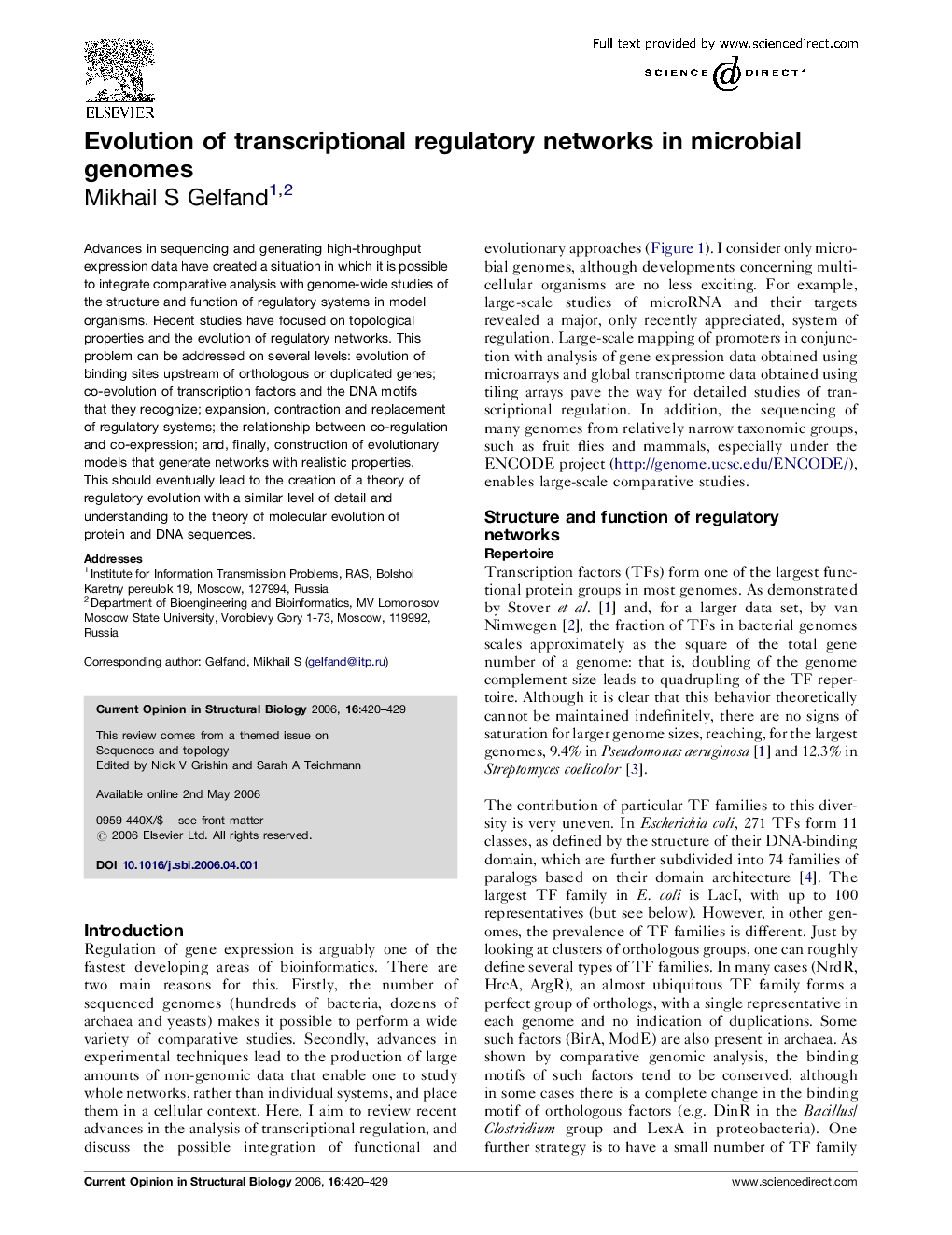| Article ID | Journal | Published Year | Pages | File Type |
|---|---|---|---|---|
| 1979607 | Current Opinion in Structural Biology | 2006 | 10 Pages |
Advances in sequencing and generating high-throughput expression data have created a situation in which it is possible to integrate comparative analysis with genome-wide studies of the structure and function of regulatory systems in model organisms. Recent studies have focused on topological properties and the evolution of regulatory networks. This problem can be addressed on several levels: evolution of binding sites upstream of orthologous or duplicated genes; co-evolution of transcription factors and the DNA motifs that they recognize; expansion, contraction and replacement of regulatory systems; the relationship between co-regulation and co-expression; and, finally, construction of evolutionary models that generate networks with realistic properties. This should eventually lead to the creation of a theory of regulatory evolution with a similar level of detail and understanding to the theory of molecular evolution of protein and DNA sequences.
